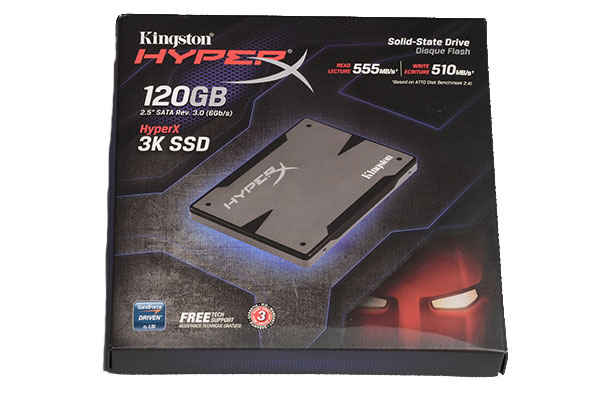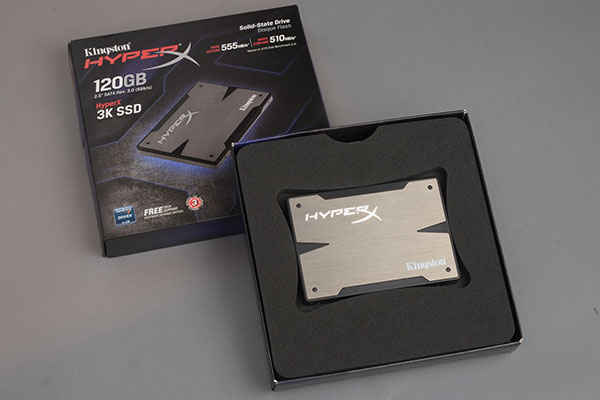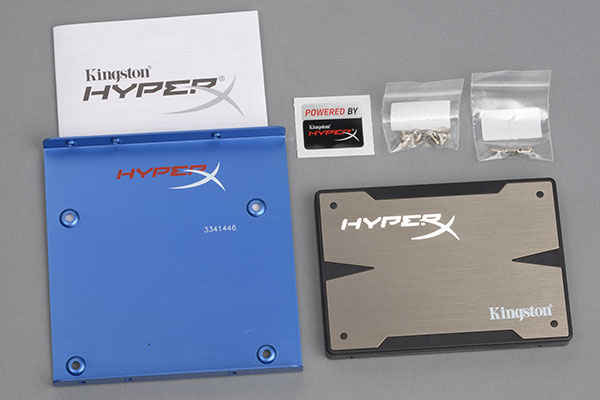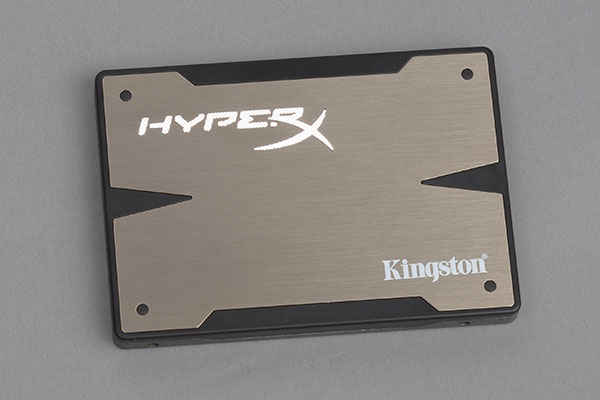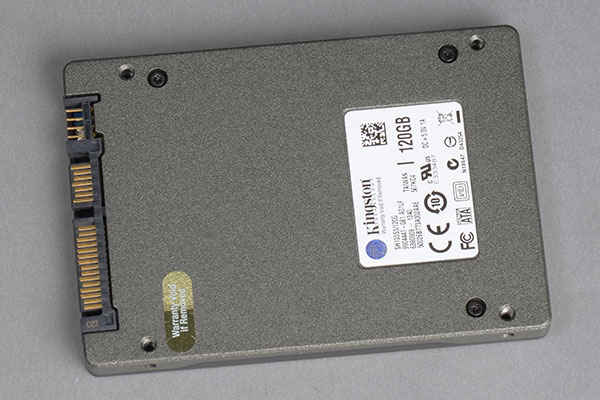30 days with Kingston HyperX 3K SSD 120GB
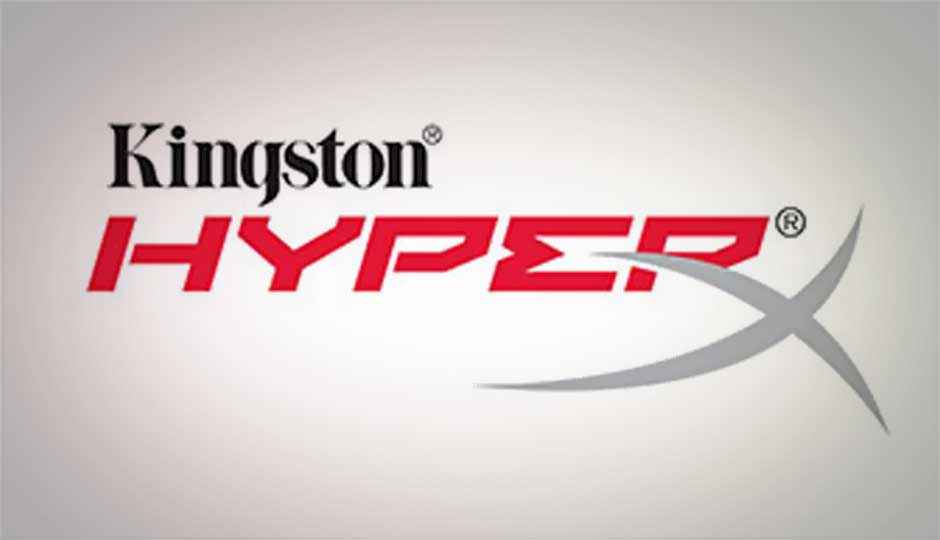
Promotional Feature: We’ve tested SSDs by the dozen this year and finally we get our hands on Kingston’s HyperX 3K SSD. So let’s take a look at the unboxing and features of this SSD while also running a few benchmarks to get performance figures.
Since their inception in the mainstream market, SSDs have always been like a luxury component, something which not everyone can afford. This was primarily because of the cost per GB SSDs offered which was extremely high. But now that the market has stabilised and with the price of SSDs dropping by the day, it makes real sense to go out and buy one. It’s true that they are still far more costlier than HDDs, but when you’re building a decent performing PC, an SSD is a must now. Not only you’ll find your PC booting up insanely faster, but you’ll also love the short game loading times (provided you install the game in question on the SSD).
With regular improvement in controllers and memory chips that SSDs use, the market is forever shifting and switching to adapt and incorporate newer, cheaper and better performing SSDs. This is where companies try and launch models that are cheaper than the others in a blaze to improve their sales. Afterall, it’s well known that the competition mostly lies in the low-range to mid-range segment in our country and the product that can tilt the scales in its favour comes out on top. As an offshoot of this, Kingston with all their storage expertise revealed the HyperX 3K SSD aimed at budget minded gamers and enthusiasts alike.
The Kingston HyperX 3K uses 3K NAND memory which is why the “3K” moniker in the model name. This 3K label means that the NAND memory can easily last for up to 3,000 full write or program erase cycles. This is different from the HyperX 5K series SSDs that we’ve seen Kingston release previously. Use of 3K NAND memory makes it much more economical and hence allows for selling the SSD at a competitive price. But this is in no way bad for the drive in terms of the performance that it offers. Kingston used the SF-2281 SandForce controller in the HyperX 3K and we received the 120GB model for our campaign and this model has sixteen 8GB NAND modules on both sides of the PCB.
The HyperX 3K 120GB comes packed in a nice box with all the features and specifications of the SSD mentioned. Opening the box you’ll find that Kingston has done a good job at packaging the HyperX 3K SSD which sits at the centre on a piece of foam. Apart from the drive, other box contents include a user manual, a 2.5” to 3.5” form-factor conversion adapter, screws for installation and a Kingston HyperX case badge or sticker.
From the looks of it, the Kingston HyperX 3K 120GB SSD is designed pretty well with a nice professional touch given to it in the form of a brushed aluminium finish on the top. The top of the drive features the Kingston and HyperX branding and the entire drive follows a two-tone colour design with silver and black colours thrown in the mix mostly at the sides of the SSD. The drive does not follow the 7mm design idea for use in laptops but instead is a bit thicker and so the HyperX 3K is ideal for desktop use.
Featuring SATA 6GB/s which is the industry norm now, the HyperX 3K is easy to install and if you have run out of 2.5” drive bays on your desktop, fret not! as the included 3.5” to 2.5” form factor conversion adapter would easily allow you to plug in the drive.
Coming to the features part of the HyperX 3K, the drive supports TRIM and S.M.A.R.T. technologies. TRIM enhances the wear levels of the drive by eliminating merge operations for deleting data blocks. This basically means that you can’t recover lost data as TRIM nulls out the space where deleted files were stored, making the data completely unrecoverable. But since you can disable the TRIM feature, you always have an option to not enable TRIM. S.M.A.R.T on the other hand is mainly known as Self-Monitoring, Analysis and Reporting Technology used to gauge the life of storage components and in this case the HyperX 3K SSD.
For checking the performance of the HyperX 3K 120GB SSD, we used a mix of synthetic and real world tests. We made sure to securely erase the SSD using DiskWipe software utility and used the One Pass Zeroes erasing pattern to write zeroes on the SSD. This ensures that the SSD is free of any content. Our first synthetic test was Crystal Disk Mark and we kept the test size as 1000MB for both random read/write tests while running five iterations of the test.
These are the scores received using Crystal Disk Mark (0x00 Fill):
Read (in MB/s)
Sequential/512K: 520.2/482.5
4K/4K QD32: 30.26/335.7
Write (in MB/s)
Sequential/512K: 519.4/510.9
4K/4K QD32: 127.3/322.7
Next we used AS SSD benchmark to get the sequential and random read/write scores. The file size we used in the random test was 4KB. We also received the access time from the AS SSD benchmark.
These are the scores we received in AS SSD benchmark:
Read:
Sequential Read (in MB/s): 464.6
4K 64 (in MB/s): 127.29
Access Time (in ms): 0.051
Write:
Sequential Write (in MB/s): 238.09
4K 64 (in MB/s): 206.17
Access Time (in ms): 0.182
Overall Score: 637
IOPS
Read 4K-64 Thread: 32586
Write 4K-64 Thread: 52779
AS SSD Copy Benchmark:
Speed (in MB/s)
ISO: 361.42
Program: 289.63
Game: 398.6
Duration (in secs)
ISO: 2.97
Program: 4.86
Game: 3.46
Synthetic tests didn’t end here as we also ran PC Mark 7’s secondary storage test. Below are the scores that we received using PC Mark 7:
PC Mark Secondary Storage Score: 5385
Windows Defender (MB/s): 5.62
Importing Pictures (MB/s): 29.98
Video Editing (MB/s): 23.52
Windows Media Centre (MB/s): 8.29
Adding Music (MB/s): 1.41
Starting applications (MB/s): 54.18
Gaming (MB/s): 17.21
Finally, we did the real world tests as these tests are a true indication of how good is the performance of any particular SSD. We used a single 8GB sequential file for sequential read and write tests. And an assorted set of files of size 8GB for assorted read and write tests.
Real world test results:
8 GB Sequential File Write: 309.48
8 GB Assorted File Write: 265.2
8 GB Sequential File Read: 327.15
8 GB Assorted File Read: 309.59
Sequential Transfer: 159.21
Assorted Transfer: 142.86
When we take a look at the raw overall performance of the Kingston HyperX 3K SSD, you can see that it did really well. Its performance encompasses the synthetic as well as real world tests and the performance figures show how good the drive is in competition to other SSDs in that price bracket. The HyperX 3K is pretty much covered when speaking of all the other aspects of the drive, be it features or bundled contents. You can easily consider the Kingston HyperX 3K 120GB when you’re building a high performing PC.
Features:
TRIM Support: Yes;
Capacities: 120GB, 240GB, 480GB
Form factor: 2.5″
Dimensions: 69.85 x 100 x 9.5mm
Operating Temperature: 0°C ~ 70°C
MTBF: 1,000,000 Hrs
Interface: SATA Rev 3.0 (6Gb/s), SATA Rev 2.0 (3Gb/s)
Controller: 2nd Generation SandForce Controller SF-2281
Components: MLC NAND (3k P/E Cycles)
This was our take on the Kingston HyperX 3K SSD 120GB. We’ll cover a few other Kingston products in the coming weeks as well, so stay tuned and watch this space for more details. Also check out our unboxing and first look video of the Kingston HyperX 3K SSD 120GB below
Read about the Kingston DataTraveler HyperX 3.0 256GB which we covered earlier here.

